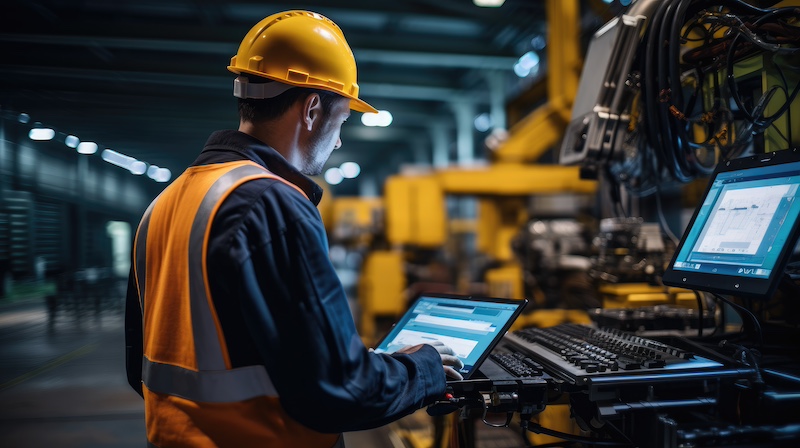Pros and Cons of Integrating Robotics in Manufacturing
As technology advances, it paves the way for new breakthroughs in automation. It’s, therefore, not a surprise that the robotics industry is experiencing a significant boom. This trend is especially true for industrial robotics tailored to the manufacturing sector.
There are many applications for robotics, and automated integration is extensive, from medical device production and food packaging to metal fabrication and consumer goods assembly.
As a manufacturing company, however, it’s crucial to assess your unique application to identify possible downsides and benefits of industrial robots before integration. This post explores the pros and cons of incorporating robotics into manufacturing processes. Read on to learn more.
Pros of Industrial Robotics in Manufacturing
Here are the advantages of using robots in your manufacturing firm:
1. Increases Manufacturing Plant Productivity And Efficiency
The temptation of robotics integration is undeniable for Original Equipment Manufacturer (OEM) and other producers.

This is because robots can easily boost the productivity and efficiency of your workforce. This means you can manufacture more products much faster than competitors that are still relying on people.
Industrial robots also provide better product quality alongside quantity. When it comes to manufacturing quality, being accurate and consistent is crucial.
Industrial robots are built for both. There are fewer mistakes and wasted products because of how they can assemble and manufacture parts precisely, thanks to automation.
2. Improves Flexibility And Adaptability
Robots give room for flexibility and adaptability as well. You can reprogram and swap today’s robots with different tools so production lines can change fast. This means you can quickly tweak lines to churn out new products. Or they can rapidly adjust to keep up with what customers want.
Robots’ agility is said to be more significant than that of traditional production lines. With them, you don’t have to shut down lines for as long to shift gears. And they save a ton of money not having to retool from scratch when there’s a need to adapt to manufacturing changes.
3. Enhances Worker Safety
Another big plus with robots is how much safer they make things for your team. Many manufacturers use hazardous materials or repetitive motions that can put people at risk. These tasks take a major toll on workers’ health and safety over time.
By having robots handle the risky tasks instead, you can keep your employees out of harm’s way. You’ll also minimize workplace accidents that can lead to huge liability claims or lawsuits.
Basically, deploying robots for dangerous jobs is smarter – it protects both workers and the company’s bottom line.
4. Increases Return on Investment (ROI)
The initial investment in implementing robotic systems and automated conveyance may be significant. But down the line, manufacturing automation boosts your ROI rates.
With automated manufacturing, speeds get faster, quality improves, and downtime is reduced – overall production and profits see a jump. That gives you a bigger return on your initial investment.
Automating repetitive tasks saves money on labor costs as well. It frees human workers to take on more technical jobs that require creative thinking and problem-solving skills.
Instead of doing mundane tasks, your team can focus on making products and processes even better. This lets you invest your time in growing the business in new ways.
Cons of Industrial Robotics in Manufacturing
Here are the disadvantages of using robots in your manufacturing company’s processes:
1. High Initial Investment
Integrating industrial robots into your manufacturing processes isn’t a walk in the park. The upfront costs of buying and setting up robots can be staggering.
The robots themselves don’t come cheap. Furthermore, you’ll have to shell out more money for upgrading facilities, maintenance, and training staff to run these hi-tech machines.
2. Complex Integration
Integrating robots into your current manufacturing setups can be daunting. It requires adequate time and skilled personnel to pull it off. You can’t just bring in robots and expect seamless integration from the jump. Making the hardware and software sync requires expertise.
Custom programming is needed so robots coordinate with equipment. Plus, you must integrate safety protocols. Systems need thorough testing and troubleshooting. Additionally, you must train your workforce in how to properly use these machines.
3. Job Displacement
Manufacturing robots taking away jobs is a big worry amongst manufacturing teams. There’s no doubt about it – robots excel at certain tasks, but those often overlap with human roles.
Bringing in automation can lead to layoffs rather than just productivity gains. This could worsen unemployment if robots suddenly perform jobs better than people. People will have to learn new skills after losing roles to automation.
It’s a balancing act for manufacturers. You want the latest tech and robots to stay competitive. But you don’t want to discard their workforce in the process.
Going forward, figuring out how to adopt automation without axing jobs will be key. Companies must find ways for robots and humans to complement, not compete.
In Conclusion
Generally, bringing robots into manufacturing can be challenging. It offers great opportunities but also comes with some serious risks. There’s no doubt robots boost productivity, improve quality, and enhance safety.
But you must weigh these perks carefully against the huge costs, possible job losses, and added complexity robots bring. Remember, embracing a robotic revolution depends on your company’s specific needs, resources, and long-term aims.

